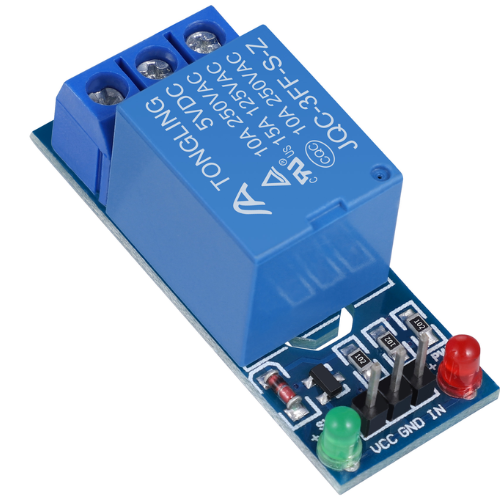Relay Module 1ch
A 5V 1-channel relay module is a compact and versatile electronic component that allows a microcontroller, such as an Arduino or Raspberry Pi, to control high-voltage devices (e.g., lights, motors, home appliances) with a low-voltage signal. It acts as a switch, enabling or disabling the flow of electricity in a circuit. Key Features: ⚫ Relay Specifications: Typically rated for 250V AC at 10A or 30V DC at 10A, capable of switching both AC and DC loads. ⚫ Input Voltage: Operates at 5V DC, making it compatible with most microcontrollers and development boards. ⚫ Optocoupler Isolation: Many modules include an optocoupler to electrically isolate the control circuit from the high-power circuit, enhancing safety. ⚫ Indicator LED: An onboard LED that indicates the relay's status (on/off). ⚫ Control Pin: Usually requires a low-level signal (0V) to activate the relay and a high-level signal (5V) to deactivate it. Applications: ⚫ Home Automation: Control household appliances remotely. ⚫ Robotics: Manage motors and actuators in robotic systems. ⚫ Industrial Automation: Automate machinery and processes in industrial settings. ⚫ Security Systems: Control door locks, alarms, and other security devices. ⚫ Prototyping: Develop and test electronic circuits and projects requiring high-power control. Advantages: ⚫ Isolation: Ensures safe operation by isolating the low-power control circuit from the high-power load circuit. ⚫ Simplicity: Easy to use with microcontrollers, requiring minimal wiring and programming. ⚫ Versatility: Suitable for switching a wide range of AC and DC devices. Cost-Effective: Inexpensive component, ideal for hobbyists and professional developers alike.
